Themed collection Environmental Science: Nano 2017 Most Downloaded Articles

Water purification: oil–water separation by nanotechnology and environmental concerns
Organic pollutants from synthetic organic compounds (SOCs) and oil spills have led to significant water contamination. This article review the progress of oil–water separation using nanotechnology and the concern of water contamination by nanomaterials.
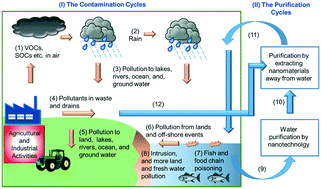
Environ. Sci.: Nano, 2017,4, 514-525
https://doi.org/10.1039/C6EN00505E
Photocatalytic nanomaterials for solar-driven bacterial inactivation: recent progress and challenges
Nanostructured photocatalysts have attracted ever-growing research attention in the application of solar energy for water disinfection.
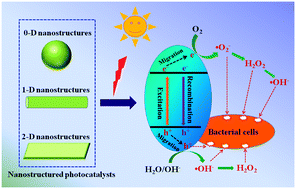
Environ. Sci.: Nano, 2017,4, 782-799
https://doi.org/10.1039/C7EN00063D
Graphitic carbon nitride-based nanocomposites as visible-light driven photocatalysts for environmental purification
This review presents an overview about graphitic carbon nitride-based nanocomposites as visible-light driven photocatalysts for environmentally relevant applications.

Environ. Sci.: Nano, 2017,4, 1455-1469
https://doi.org/10.1039/C7EN00255F
WO3-based photocatalysts: morphology control, activity enhancement and multifunctional applications
This review focuses on the morphology control, enhancement strategies of photocatalytic activity and applications of WO3-based photocatalysts.
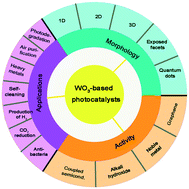
Environ. Sci.: Nano, 2017,4, 539-557
https://doi.org/10.1039/C6EN00478D
Single-particle multi-element fingerprinting (spMEF) using inductively-coupled plasma time-of-flight mass spectrometry (ICP-TOFMS) to identify engineered nanoparticles against the elevated natural background in soils
This novel single-particle multi-element fingerprinting (spMEF) method makes it possible to discriminate engineered and natural nanoparticles in complex matrices.
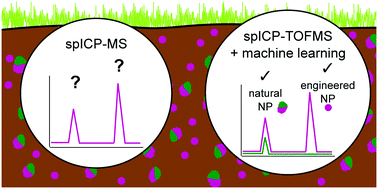
Environ. Sci.: Nano, 2017,4, 307-314
https://doi.org/10.1039/C6EN00455E
Adsorption-intensified degradation of organic pollutants over bifunctional α-Fe@carbon nanofibres
Uniform α-Fe encapsulated in activated carbon nanofibres exhibited excellent activity, high stability and easy magnetic separation for PMS activation.
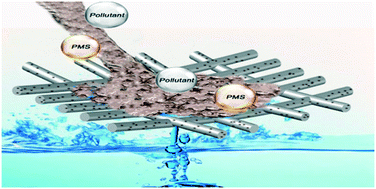
Environ. Sci.: Nano, 2017,4, 302-306
https://doi.org/10.1039/C6EN00568C
Plasmonic resonance excited dual Z-scheme BiVO4/Ag/Cu2O nanocomposite: synthesis and mechanism for enhanced photocatalytic performance in recalcitrant antibiotic degradation
Novel dual Z-scheme BiVO4/Ag/Cu2O nanocomposite was prepared and presented enhanced photocatalytic activity.

Environ. Sci.: Nano, 2017,4, 1494-1511
https://doi.org/10.1039/C7EN00237H
Metal uptake and distribution in the zebrafish (Danio rerio) embryo: differences between nanoparticles and metal ions
Quantitative data on nanoparticle and cation uptake are compared in a compartment-specific way and distinct differences between metals were identified.
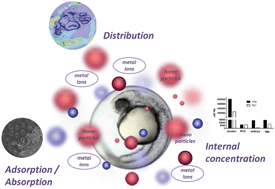
Environ. Sci.: Nano, 2017,4, 1005-1015
https://doi.org/10.1039/C6EN00440G
SrTiO3 nanocubes decorated with Ag/AgCl nanoparticles as photocatalysts with enhanced visible-light photocatalytic activity towards the degradation of dyes, phenol and bisphenol A
Ag/AgCl/SrTiO3 composites were successfully fabricated and exhibited enhanced photocatalytic performance for the degradation of organic pollutants.
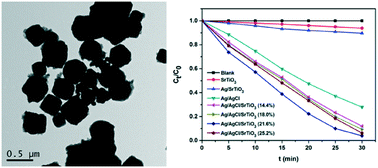
Environ. Sci.: Nano, 2017,4, 585-595
https://doi.org/10.1039/C6EN00597G
An insight into metal organic framework derived N-doped graphene for the oxidative degradation of persistent contaminants: formation mechanism and generation of singlet oxygen from peroxymonosulfate
Singlet oxygen produced during peroxymonosulfate activation by N-graphene dominated the pollutants degradation.
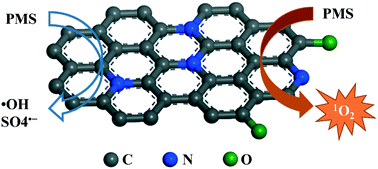
Environ. Sci.: Nano, 2017,4, 315-324
https://doi.org/10.1039/C6EN00633G